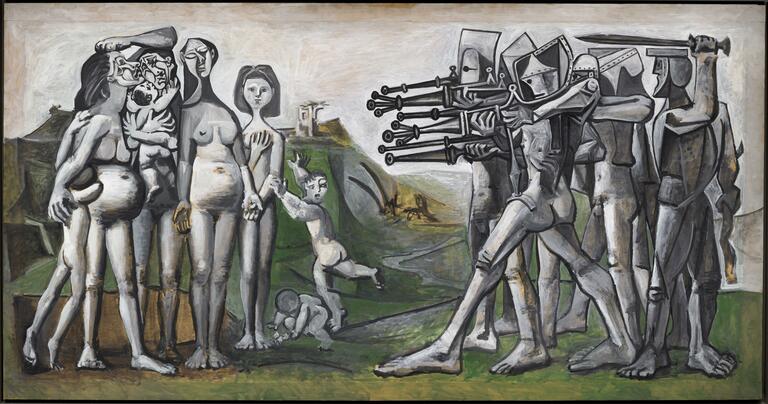
Massacre in Korea, 1951
Musée national Picasso-Paris
© Succession Picasso/VG Bild-Kunst, Bonn 2021
Photo: bpk/RMN-Grand Palais/Mathieu Rabeau
Picasso, Shared and Divided - The Artist and His Image in East and West Germany Picasso
What do we associate with Pablo Picasso? And what associations with him did the German people have in mind during the post-war years, when he was at the height of his fame? Far more than we do: This is the main idea of the exhibition, which reveals a forgotten breadth, tension, and productivity of these appropriations. It deals not only with the artist, but with his audience, which interpreted Picasso’s art in different ways in the capitalist West and in the socialist East. The German Picasso was divided, but this division also stimulated the reception: Because everyone questioned his art, it had something to say for everyone.
The exhibition features political works, such as the painting Massacre in Korea (1951) from the Musée Picasso in Paris. These are shown alongside some 150 exhibits that reflect the impact of Picasso’s work: exhibition views, posters, catalogues, press reports, letters, files, films, and television reports, as well as a theater curtain from the Berliner Ensemble on which Bertolt Brecht had “the peace dove militant of my brother Picasso” painted.
Picasso served as a figurehead and symbol for both systems and in both German states. He was a member of the French Communist Party and supported struggles for liberation as well as peace conferences. But he lived in the West and allowed bourgeois critics to conventionalize him as an apolitical genius, “the mystery of Picasso". Which works were shown under socialism, and which under capitalism? How was his work conveyed? Did the West see only the art, and the East his politics? And how did the artist view things himself? Picasso, Shared and Divided examines the image that people took from Picasso’s pictures in the two Germanys. One focus is Peter and Irene Ludwig’s Picasso collection, which remains one of the largest to this day.